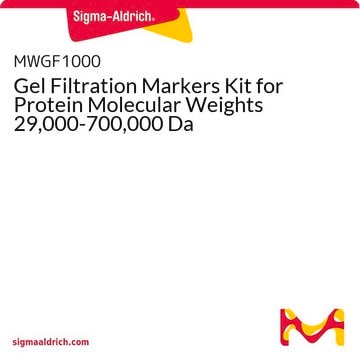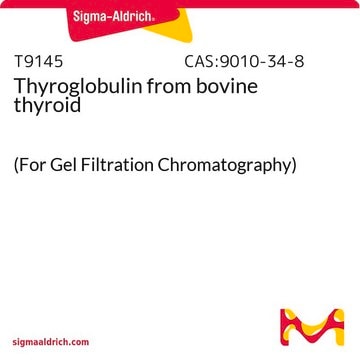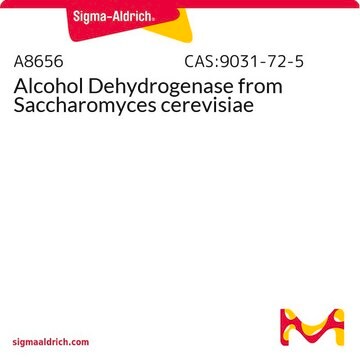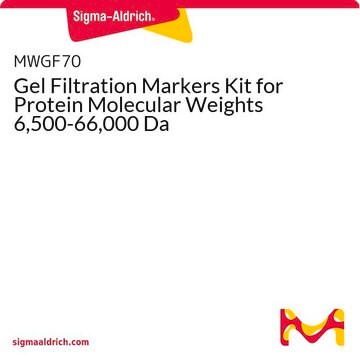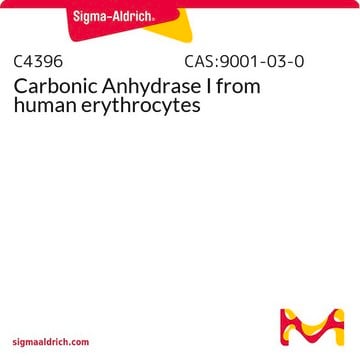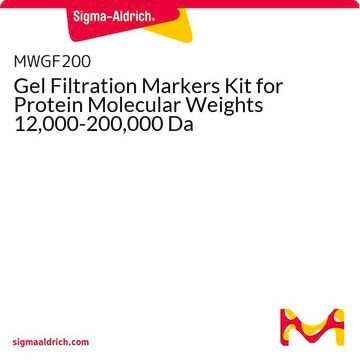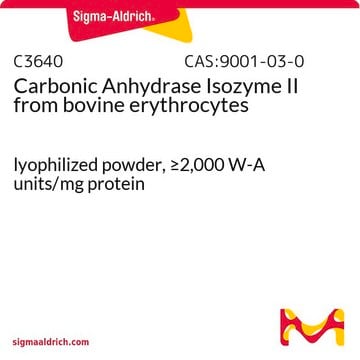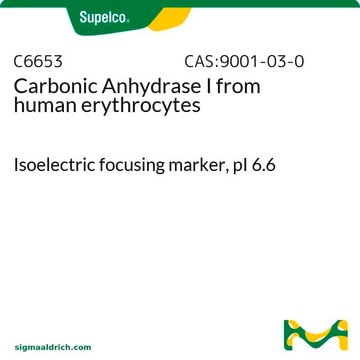C7025
Carbonic Anhydrase from bovine erythrocytes
BioReagent, suitable for GFC marker
Synonym(s):
Carbonate Dehydratase, Carbonate Hydrolyase
Sign Into View Organizational & Contract Pricing
All Photos(1)
About This Item
Recommended Products
product line
BioReagent
Quality Level
form
powder
mol wt
~29,000
packaging
vial of 15 mg
suitability
suitable for GFC marker
storage temp.
−20°C
Looking for similar products? Visit Product Comparison Guide
Application
Carbonic Anhydrase from bovine erythrocytes is a bioreagent used in gel filtration chromatography, protein chromatography and plasma and blood proteins. Carbonic anhydrase has been used to study compounds widely known to have anticancer properties against human cancers and that act as diuretic, antibacterial, antifungal, antitubercular and leishmanicidal agents.
Gel filtration molecular weight marker
Signal Word
Danger
Hazard Statements
Precautionary Statements
Hazard Classifications
Resp. Sens. 1
Storage Class Code
11 - Combustible Solids
WGK
WGK 3
Flash Point(F)
Not applicable
Flash Point(C)
Not applicable
Personal Protective Equipment
dust mask type N95 (US), Eyeshields, Gloves
Certificates of Analysis (COA)
Search for Certificates of Analysis (COA) by entering the products Lot/Batch Number. Lot and Batch Numbers can be found on a product’s label following the words ‘Lot’ or ‘Batch’.
Already Own This Product?
Find documentation for the products that you have recently purchased in the Document Library.
Customers Also Viewed
Khushbu Rauniyar et al.
Scientific reports, 12(1), 18157-18157 (2022-10-29)
Vascular endothelial growth factor-C (VEGF-C) stimulates lymphatic vessel growth in transgenic models, via viral gene delivery, and as a recombinant protein. Expressing eukaryotic proteins like VEGF-C in bacterial cells has limitations, as these cells lack specific posttranslational modifications and provisions
H Zhu et al.
The Journal of biological chemistry, 271(47), 30007-30021 (1996-11-22)
The extracellular hemoglobin of the earthworm Lumbricus terrestris has four major kinds of O2-binding chains: a, b, and c (forming a disulfide-linked trimer), and chain d. Non-heme, non-globin structural chains, "linkers," are also present. Light-scattering techniques have been used to
Wisath Sae-Lee et al.
Cell reports, 40(3), 111103-111103 (2022-07-21)
Red blood cells (RBCs) (erythrocytes) are the simplest primary human cells, lacking nuclei and major organelles and instead employing about a thousand proteins to dynamically control cellular function and morphology in response to physiological cues. In this study, we define
Do Hyeon Kim et al.
Journal of microbiology and biotechnology, 30(12), 1905-1911 (2020-10-14)
Homoserine dehydrogenase (HSD) catalyzes the reversible conversion of L-aspartate-4- semialdehyde to L-homoserine in the aspartate pathway for the biosynthesis of lysine, methionine, threonine, and isoleucine. HSD has attracted great attention for medical and industrial purposes due to its recognized application
Fabrizio Carta et al.
Journal of medicinal chemistry, 56(11), 4691-4700 (2013-05-08)
Dithiocarbamates (DTCs) were recently discovered as carbonic anhydrase (CA, EC 4.2.1.1) inhibitors. A series of xanthates and a trithiocarbonate, structurally related to the DTCs, were prepared by reaction of alcohols/thiols with carbon disulfide in the presence of bases. These compounds
Our team of scientists has experience in all areas of research including Life Science, Material Science, Chemical Synthesis, Chromatography, Analytical and many others.
Contact Technical Service
